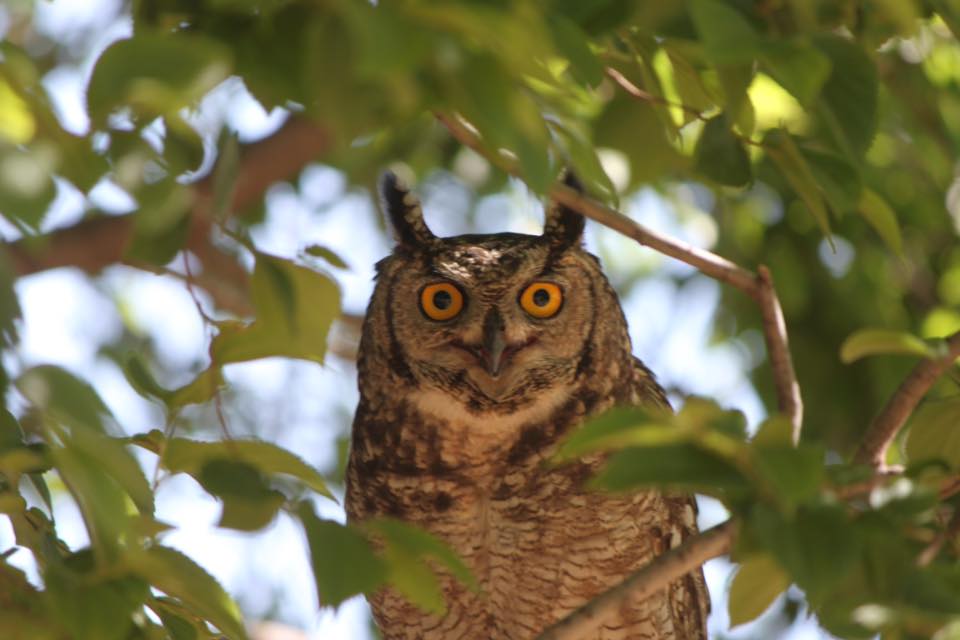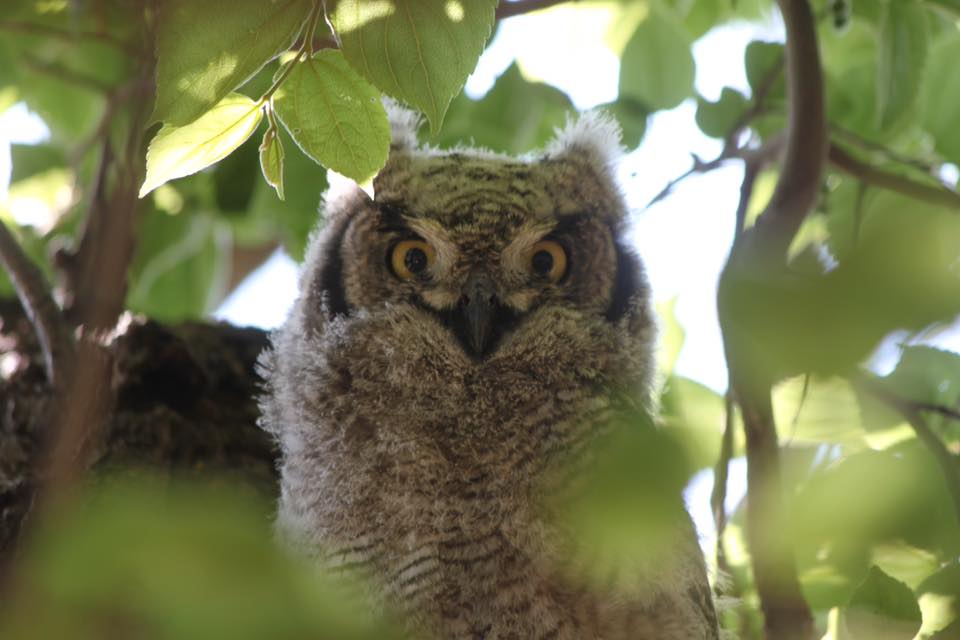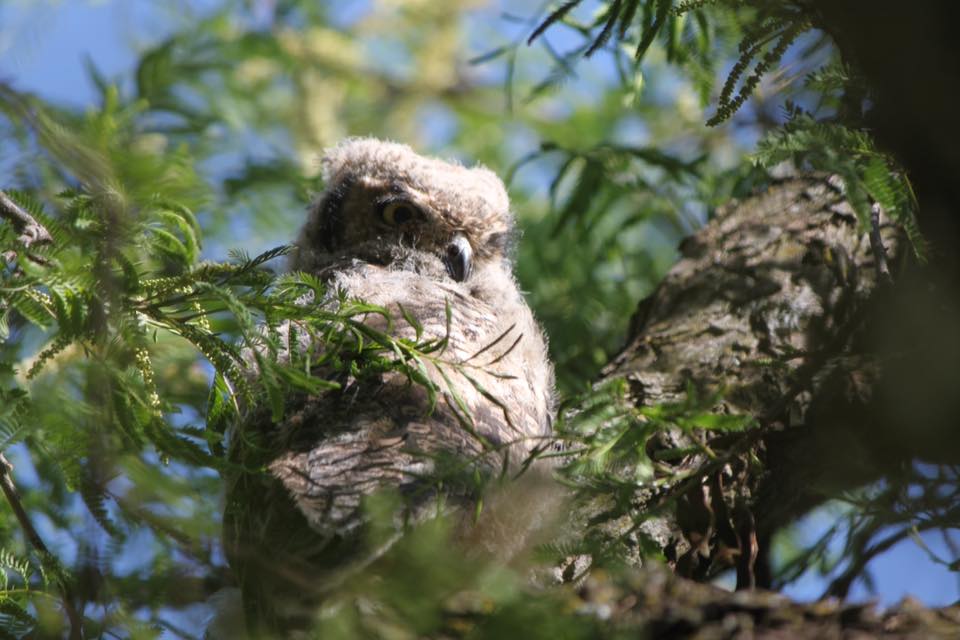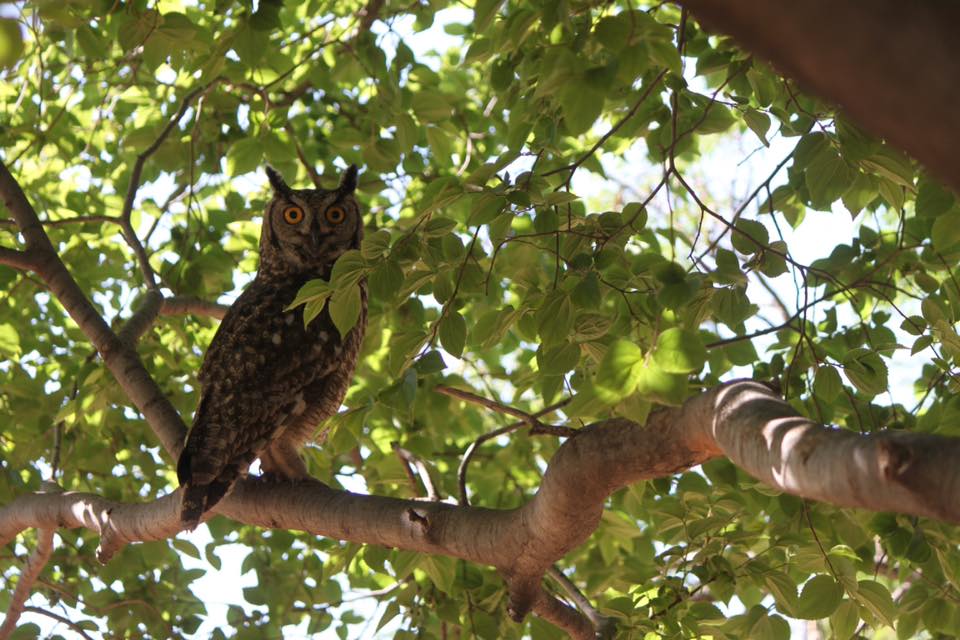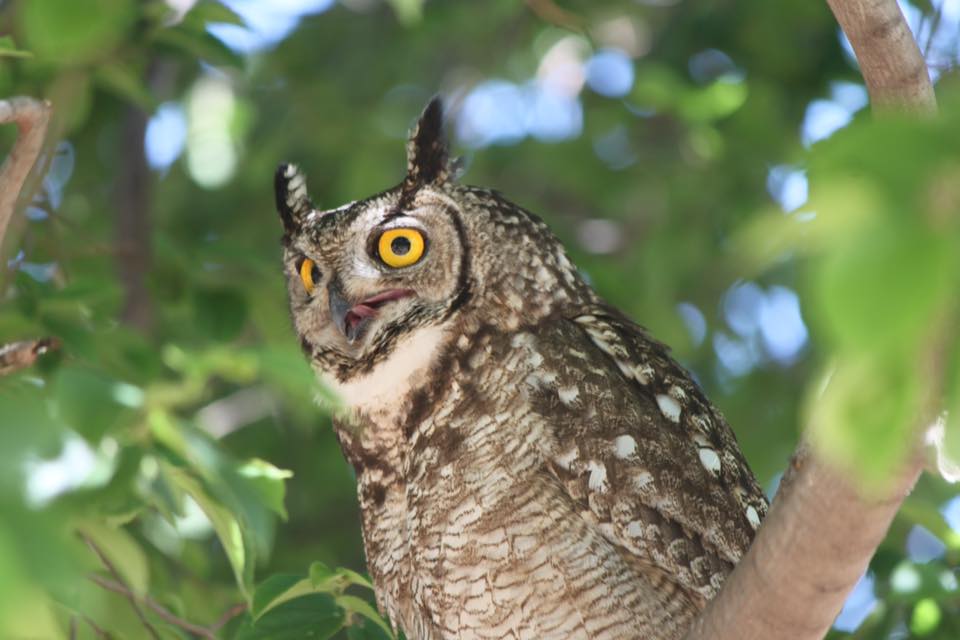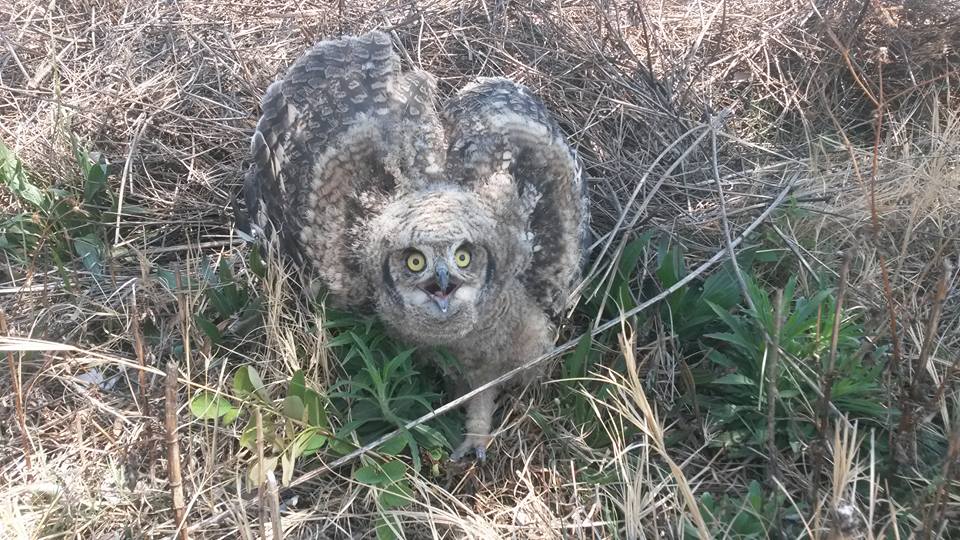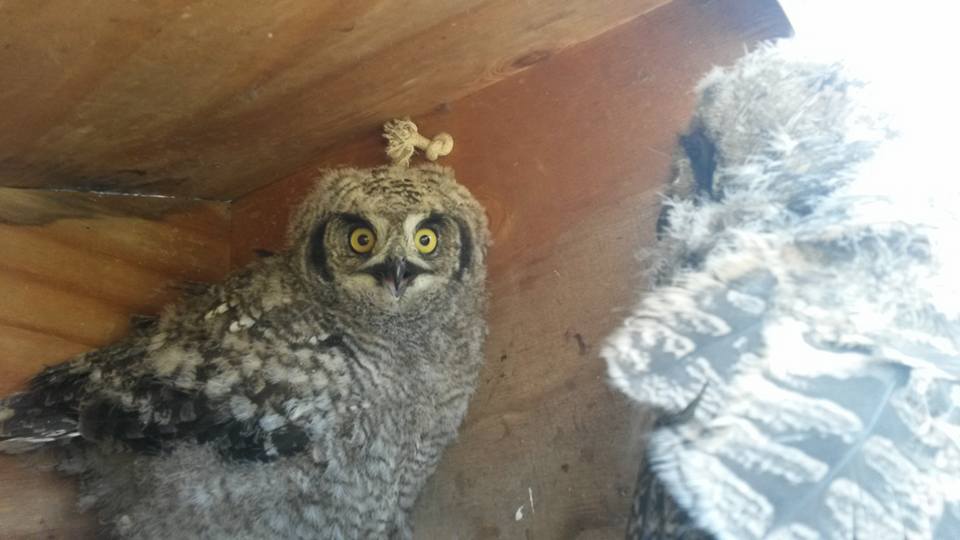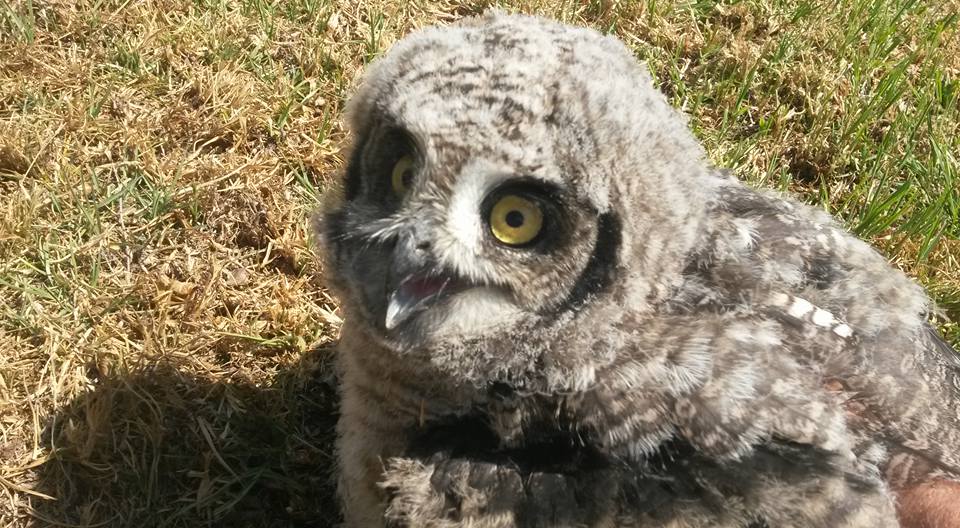St Stithians is a wildlife haven in the city
Author: Courtney Watson
This spring, the campus has been treated to a blossoming of new life. Saints is a green lung in Johannesburg and as such, the wildlife on campus seems to gain new energy as the temperatures warm up and the winter fades away. One of these animals which has drawn much attention from our community has been the family of Spotted Eagle-Owls that took up residence in the nesting box near the Matric Carpark at the Girls’ College. Cars, walker's and cyclists have all taken an interest in the lives of these birds, slowing down when they go past just to get a glimpse of the nocturnal parliament.
Initially three chicks were raised, one being forced out of the nest fairly early on and unfortunately, this chick did not survive, being mauled by a dog one of the reasons why we insist that dogs are kept on a leash. The other two, however, flourished. What is interesting about owls is that they tend to leave the nest and then spend up to five weeks on the ground and in the bush where they are still fed by the parents as they learn to fly and become independent. This posed a bit of a problem because of the nest’s location so close to the road it will be moved to a safer space after this brood. When the fluffy grey owlets jumped from the nest, concerned Saints families gave me a call about putting them back or at least moving them to a safer place. So most of my days were spent monitoring the owls in the evening as they explored the ground away from the owl box in the cover of night, and then tracking them down in the morning and putting them back into the box for the day. This is easier said than done because an owlet can be carried like a chicken, but their talons are sharp, and they don’t tend to enjoy the journey, particularly when it means being carried up a ridiculously high ladder. I managed to do this without breaking my neck, climbing one-handed whilst the owlets tried scratching me to bits!
One morning, though, I put both chicks back in the box and they clearly had had enough of each other or were suffering from cabin fever. They fought beak and talon, one eventually pushing the other one out. No matter how many times I collected the fallen chick, made the treacherous journey up the ladder and then put it back, a few seconds later in an eruption of feathers, one of the owlets would end up back on the ground. Their time in the nest was over. So, I found some cover in the grassland away from the road and wished the two chicks good luck on their journey to adulthood.
The owls have been very easy to find since then…all one has to do is listen to the arm calls of the other birds. They are still being fed by the parents and can be seen in the branches of some of our acacia trees trying to get some sleep whilst the louries and bulbuls shout at them. It is a wonderful story about the wonder of nature and how our campus is able to sustain some of it. There is a delicate ecological web around Saints which is most visible in spring, and by keeping a look out for our wildlife, driving a bit slower, holding pets on a lead and sharing this space with them, we can be privilege to a piece of the bush not far from one of the biggest economic centres in Africa.
These photographs of our resident owls, together with owlet, were taken near the Girls’ College student car park.
